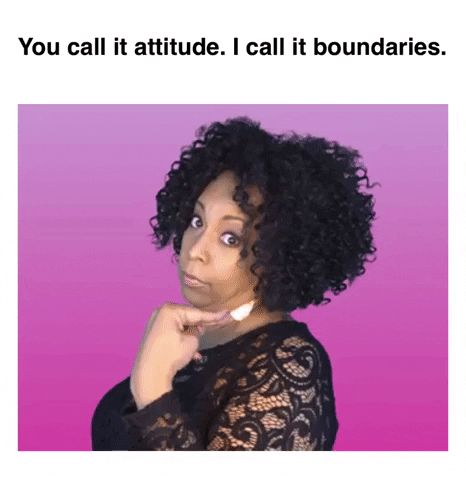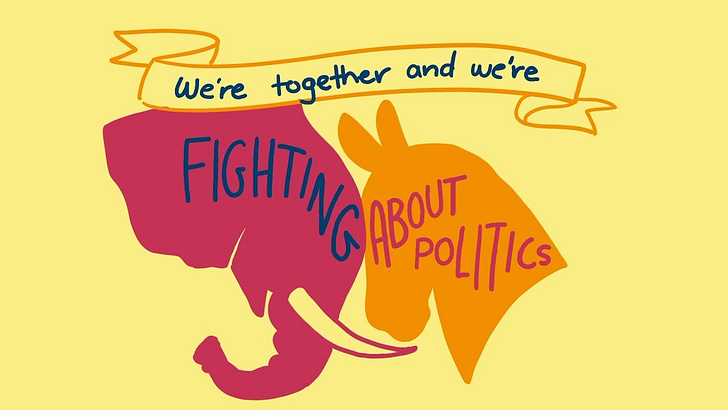How to Navigate Polarized Conversations Like a Pro
Help me understand where you're coming from on this.
Start Here
We're living through one of the most polarized periods in recent memory. Whether it's politics, vaccines, climate change, or social issues, conversations that used to be manageable now feel like walking through a minefield. One wrong word and suddenly you're in a full-blown argument with someone you care about.
Just like the wrong words at the wrong moment can blow up a conversation, the right words at the right moment can de-escalate almost any situation.
The key isn't avoiding difficult topics—it's having the right phrases ready when tensions rise.
Here's your emergency toolkit for staying connected when opinions clash.
The Golden Rule of Polarized Conversations
Before we dive into the talking points, remember this: Your goal is not to win. Your goal is to maintain the relationship while staying true to your values. If you’re walking into the argument looking to win, you might as well turn back now.
Talking Points
Phase 1: The Opening Moves (When You Sense Tension Building)
When someone brings up a hot-button topic:
"I can see this is something you feel strongly about."
"Help me understand where you're coming from on this."
"I want to make sure I'm hearing you correctly..."
When you disagree but want to keep talking:
"I see it differently, but I'm curious about your perspective."
"That's an interesting point. Can you tell me more about what led you to that conclusion?"
"I don't think we're going to agree on this, but I value understanding your viewpoint."
When you need a moment to think:
"That's a lot to process. Give me a second to think about what you've said."
"I want to respond thoughtfully to that."
"Let me make sure I understand your main point before I respond."
Phase 2: De-escalation Phrases (When Things Get Heated)
When emotions are running high:
"I can see we both care deeply about this issue."
"It sounds like this has really affected you personally."
"I think we're more aligned on the core values than it might seem."
When you're being attacked personally:
"I feel like we're moving away from the topic and toward attacking each other."
"I don't think either of us wants to hurt the other person here."
"Can we take a step back? I value our relationship too much to let this get ugly."
When someone is using extreme language:
"I hear that you're frustrated. Can you help me understand the specific part that bothers you most?"
"It sounds like you've had some experiences that have shaped this view."
"What would need to change for you to feel differently about this?"
Phase 3: Finding Common Ground (The Bridge-Building Phase)
Acknowledging shared values:
"I think we both want what's best for our families/community/country."
"It sounds like we both value [freedom/safety/fairness] - we just see different paths to get there."
"I appreciate that you care enough about this to have such strong feelings."
Validating without agreeing:
"I can understand why someone with your experiences would feel that way."
"That must have been really difficult/frustrating/scary."
"I hadn't thought about it from that angle before."
Moving toward resolution:
"What would you need to see to feel like progress was being made on this?"
"Are there any parts of this we do agree on?"
"How can we stay connected even when we see this differently?"
Phase 4: The Graceful Exit (When It's Time to Move On)
When you need to end the conversation:
"I think we've both shared our perspectives. Should we agree to disagree on this one?"
"I need to think more about what you've said. Can we table this for now?"
"I don't think we're going to solve this today, but I'm glad we could talk about it."
When you want to preserve the relationship:
"This is clearly important to both of us. I hope we can keep talking about these things even when we disagree."
"I value your friendship too much to let political differences come between us."
"Thanks for being willing to have this conversation with me, even though it wasn't easy."
When you need boundaries:
"I think we should take a break from this topic."
"I'd prefer to focus on [other topic] when we get together."
"I care about you, and I also need to protect my own emotional well-being."
Advanced Techniques: The Neuroscience Behind Why These Work
Validation before opposition: Notice how most phrases validate the other person's feelings before introducing disagreement. This activates their parasympathetic nervous system, reducing the fight-or-flight response.
Future-focused language: Phrases like "What would need to change..." redirect the brain from past grievances to future possibilities.
Shared identity markers: References to "our community" or "both of us" activate in-group psychology, reminding both parties they're on the same team.
When Nothing Works: Protecting Yourself
Sometimes, despite your best efforts, the other person isn't interested in a respectful conversation. Here's what to do:
For persistent arguers:
"I can see you're not interested in hearing different perspectives right now."
"It seems like you've already made up your mind about this."
"I don't think continuing this conversation is productive for either of us."
For personal attacks:
"I'm willing to discuss the issue, but I won't tolerate personal attacks."
"I'm going to step away from this conversation now."
"I deserve to be treated with respect, even when we disagree."
Remember: You Can't Control Others, Only Yourself
The most important thing to remember is that you can't force someone else to be reasonable, respectful, or open-minded. You can only control your own words and actions. These phrases give you the tools to stay grounded in your values while giving the other person every opportunity to engage constructively.
Sometimes people will still choose conflict over connection. That's on them, not you.
See also:














